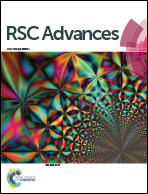Anisotropic thermal conductivity and mechanical properties of phagraphene: a molecular dynamics study
Abstract
Phagraphene is a novel 2D carbon allotrope with interesting electronic properties which has been recently theoretically proposed. Phagraphene is similar to a defective graphene structure with an arrangement of pentagonal, heptagonal and hexagonal rings. In this study we investigate the thermal conductivity and mechanical properties of phagraphene using molecular dynamics simulations. Using the non-equilibrium molecular dynamics method, we found the thermal conductivity of phagraphene to be anisotropic, with room temperature values of 218 ± 20 W m−1 K−1 along the armchair direction and 285 ± 29 W m−1 K−1 along the zigzag direction. Both values are one order of magnitude smaller than for pristine graphene. The analysis of the phonon group velocities also shows a significant reduction in this quantity for phagraphene in comparison to graphene. By performing uniaxial tensile simulations, we studied the deformation process and mechanical response of phagraphene. We found that phagraphene exhibits a remarkable high tensile strength around 85 ± 2 GPa, whereas its elastic modulus is also anisotropic along the in-plane directions, with values of 870 ± 15 GPa and 800 ± 14 GPa for the armchair and zigzag directions, respectively. The lower thermal conductivity of phagraphene along with its predicted electronic properties suggests that it could be a better candidate than graphene in future carbon-based thermoelectric devices.



 Please wait while we load your content...
Please wait while we load your content...